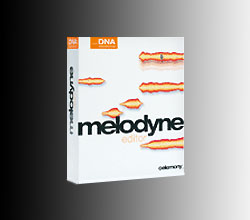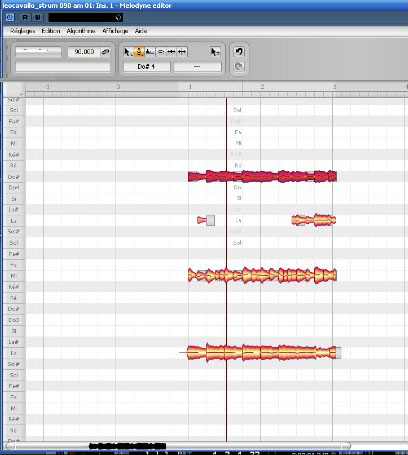
It also works quite good with loops containing clearly separated notes.
This sample makes the point clearer; in spite of the reverb, which could make detection more difficult, the software does a wonderful job (notice that it allows you to hide or display the decay of the notes, in other words, the reverb effect).
Here is the same sample after DNA. Not really! I changed the files! Got you, didn’t I? I did it to prove that the algorithm is sophisticated…
Actually, when the sounds are well separated, the software is pretty effective: we had the opportunity to mess around with strings, guitar, piano, and banjo loops and always got convincing results.
You can listen to what we did, just for fun, to Oasis’ “Wonderwall” and The Beatles’ “Eleanor Rigby” using the DNA…
On the other hand, it becomes more difficult with other type of sounds: distorted electric guitars have so many harmonics that you get a multitude of tiny audio segments and it’s impossible to know what they represent.
It will be much harder to edit such sounds in spite of the intelligent selection tools provided by the software.
With a simple mouse action you can select all identical notes, all the same notes in different octaves, all higher or lower fifths, and all notes on the same beat in all other bars.
Still, the good old monophonic mode remains very effective to edit a power chord and Melodyne has made that very clear.
In spite of these limitations, the software proves itself to be quite effective: you can create many useful variations from a single loop and correct minor details, like bad tuning during a recording, for example.
All the more since you can cut, copy, paste, or delete audio segments.
In most cases, it’s also possible to add a note one octave higher or lower to a brass part to enrich the harmony, but also to delete an instrument either partially or totally. Listen to this sample, and then, listen to the same sample with some copy-pasted notes added.
The software also provides lots of solutions when it comes to rhythm (quantize, etc.). In this regard, Melody makes wonders in monophonic mode, but with polyphonic signals the results are less convincing and I couldn’t really obtain satisfying sound examples. I guess it ought to be considered on a case-by-case basis.
Also notice that you can help the software in the note detection process using the dedicated tool, especially when it comes to separating notes. Pitch detection will be so much easier…

